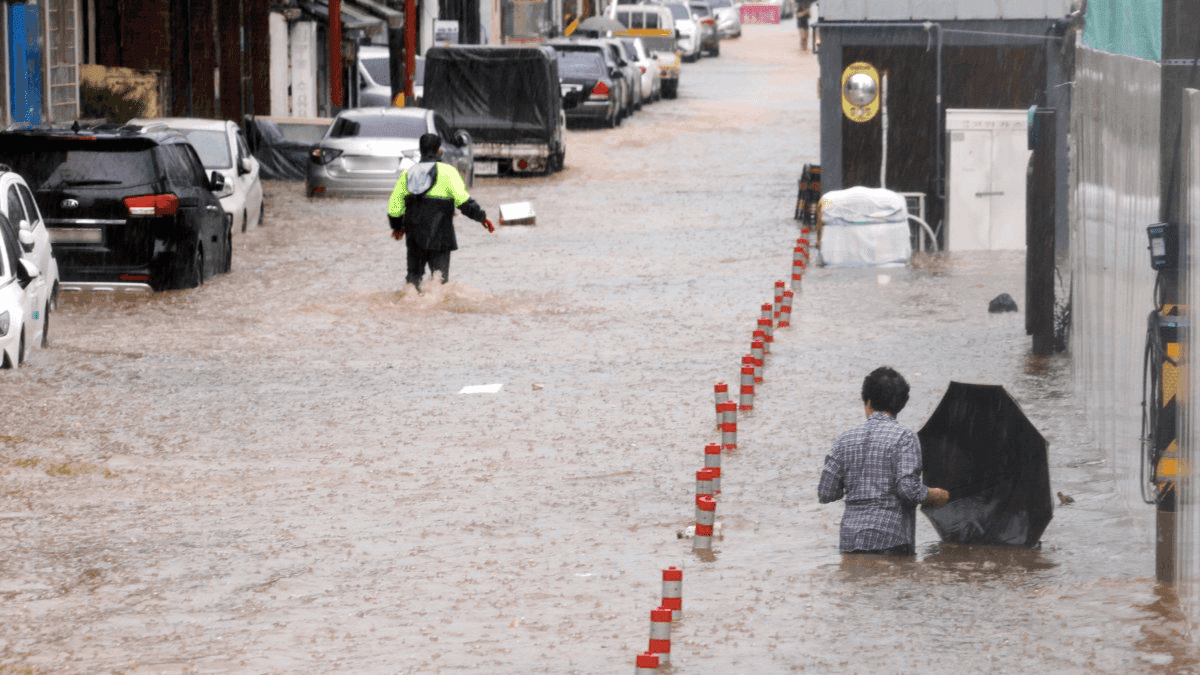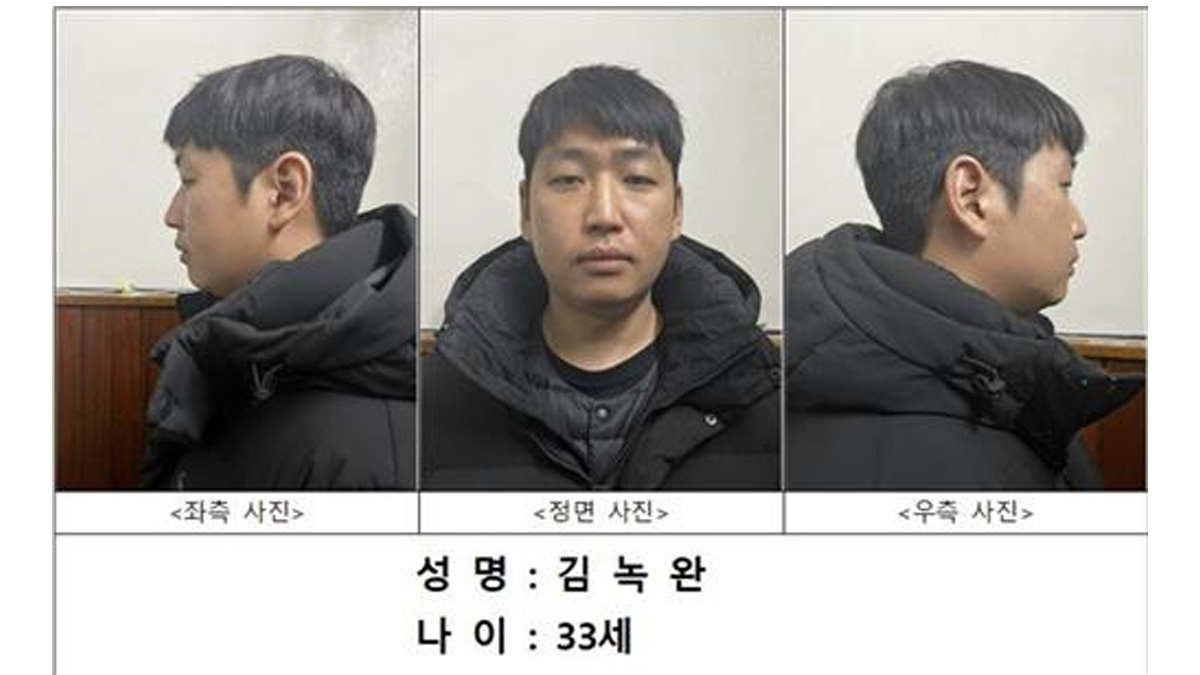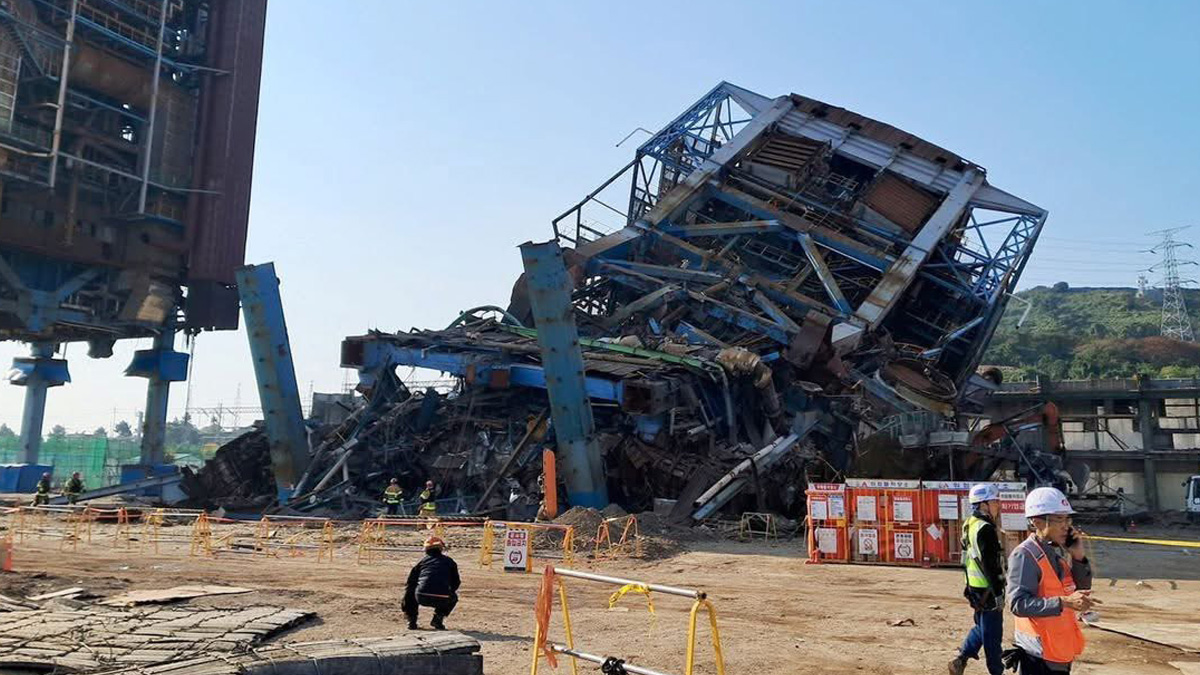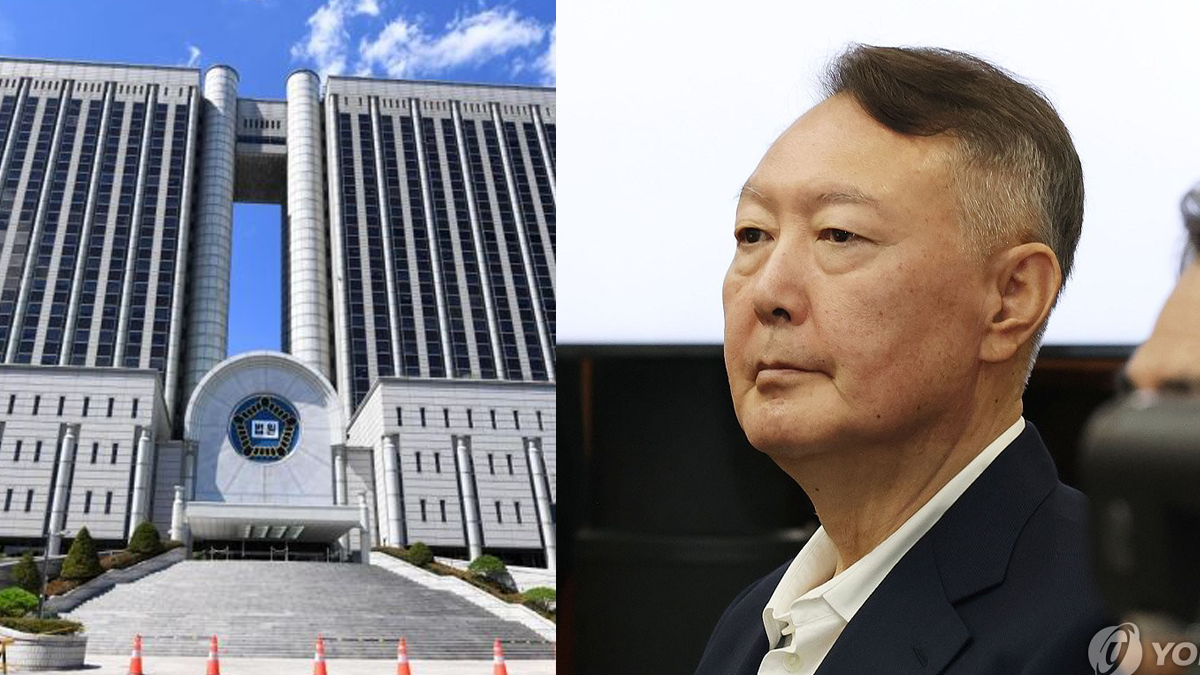South Korea hit by once-in-a-century rains as floods kill four and force thousands into shelters
South Korea is grappling with record-breaking rainfall that has killed four people and displaced over 5,000, as the government escalates emergency response efforts and warns of continued flooding risks.

Key points summary:
- South Korea has experienced over 400mm of rainfall in parts of the west and south since 16 July.
- At least four people have died and more than 5,000 have taken shelter.
- President Lee Jae Myung has called for improved disaster preparedness and response.
- The government has raised its disaster alert to the highest level amid ongoing flood and landslide risks.
- The Korea Meteorological Administration expects rain to ease by 19 July, with a heatwave possibly following.
More than 5,000 people in South Korea have been forced into shelters as of 18 July 2025, as torrential rains pummel the country for a third consecutive day, according to the Ministry of the Interior and Safety.
At least four people have died and another remains missing. Authorities warn that the unseasonal weather may continue, with risks of further flooding and landslides.
Torrential rain warnings are currently in effect for most western and southern regions of South Korea. The Korea Meteorological Administration has urged residents to remain vigilant, especially near steep slopes, rivers, and underground spaces.
Some of the heaviest rain has fallen in the southern cities, with Gwangju receiving 426mm in 24 hours and Seosan, along the west coast, recording over 400mm. According to the weather agency, the deluge in Seosan is being described as a "once-in-a-century" event.
In Gwangju, business owners like 26-year-old Kim Ha-min were forced to close operations after their premises were flooded. "I’ve never seen a flood here before," she said, noting that her neighbourhood lacks nearby streams or rivers. "The smell from the sewers is so bad I can't open for business."
Of the four confirmed fatalities, two were elderly men in their 80s. One of them was believed to be attempting to drain floodwater from his basement. Another victim died after a 10-metre-high roadside wall collapsed on his car in Osan, 44km south of Seoul, on 16 July. Fire officials say the man had phoned his wife moments earlier, reporting that his vehicle was being swept away.
A fourth victim died from cardiac arrest during the deluge. Additionally, two individuals are being treated for hypothermia, and two others suffered leg injuries, local authorities confirmed.
By 16:00 local time on Thursday, more than 1,300 residents had been evacuated from affected areas. Emergency rescue operations continue across several provinces, particularly in Daegu, Gongju, and South Chungcheong, where roads, homes, and power infrastructure have sustained extensive damage.
Photographs and video footage posted to social media reveal flooded neighbourhoods with floating furniture, overturned vehicles, and partially submerged buildings. In Gongju, central South Korea, an electric pole was seen leaning precariously over a damaged road.
South Korean President Lee Jae Myung has reiterated calls for enhanced disaster prevention measures. Speaking at an emergency weather meeting on Friday, he said: "While natural disasters are hard to prevent, we can still do more to anticipate damage and alert the public."
President Lee also noted that some casualties resulted from what he called "a poor response" to situations that were "reasonably predictable." He instructed officials to mobilise all available resources for relief and safety operations.
The South Korean government has since raised the disaster alert level to its maximum. According to the safety ministry, emergency shelters have been set up in multiple provinces, and local governments are working to provide food, water, and medical care.
Meteorologists attribute the intense rainfall to a clash of dry air from the northwest with hot, humid air from the south, resulting in unusually large rain clouds. However, the Korea Meteorological Administration forecasts that the rain will begin to ease by Saturday, 19 July, though a potential heatwave may follow in the coming week.
Residents have been urged to remain indoors, avoid riverbanks and hilly areas, and heed all official warnings. As of Friday evening, flood and landslide alerts remain active across at least a dozen districts.
Local governments are also evaluating property damage and infrastructure risks, including road closures, bridge inspections, and potential power outages. In heavily affected areas like Seosan and Gwangju, officials continue assessing the scope of recovery efforts.
This marks one of the most severe flooding events in recent years, raising concerns over the country’s preparedness for extreme weather, which scientists say may become more frequent due to climate change.








0 Comments